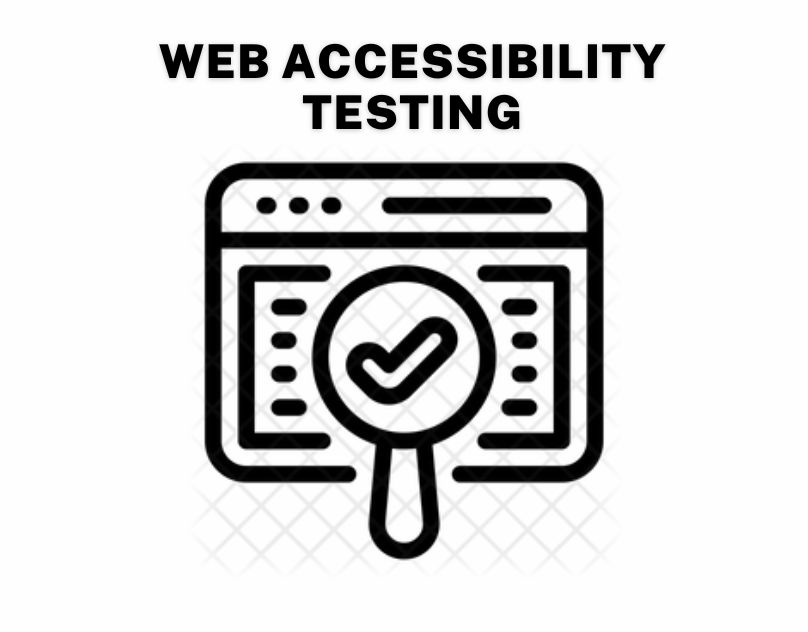Websites are meant to provide information, services, and commerce in the digital age. Accessibility testing plays an important role in making them usable for people with disabilities, promoting inclusivity and reaping benefits. This article delves into the various types of website accessibility testing, explores the compelling need for such testing, and unveils the numerous advantages it offers for businesses and organizations.
Unwrapping the Types of Website Accessibility Testing
Here’s a breakdown of the key types of web accessibility testing:
Automated Testing Tools: These tools leverage automated scripts to scan websites for common accessibility issues. They can identify missing alt text for images, insufficient color contrast, and errors in keyboard navigation. While efficient for uncovering basic problems, automated tools cannot replicate the experience of real users and may miss more nuanced accessibility concerns.
Manual Testing: This method involves human testers with disabilities navigating the website and evaluating its accessibility based on established guidelines such as the Web Content Accessibility Guidelines (WCAG). Manual testing provides a more comprehensive assessment, uncovering issues that automation might miss, such as the functionality of screen readers with interactive elements or the clarity of instructions for users with cognitive disabilities.
Assistive Technology Testing: Testers with disabilities or individuals who have experience using these technologies can identify specific challenges users might face while navigating the website with these tools.
User Testing with People with Disabilities: This gold standard of testing involves recruiting individuals with various disabilities to participate in usability testing sessions. These sessions provide invaluable insights into real-world user experiences and highlight accessibility barriers that may not be readily apparent through other methods.
Understanding the Need for Website Accessibility Testing
Web accessibility testing is not merely a feel-good practice; it addresses a critical social and legal imperative. Here’s why accessibility testing is an essential step for any website owner:
Moral and Social Responsibility: In an increasingly digital world, websites function as doorways to information, education, and commerce. Excluding users with disabilities from accessing these resources creates a digital divide. It hinders their ability to participate fully in society. Accessibility testing ensures everyone can benefit from the vast potential of the internet.
Legal Compliance: Many countries have anti-discrimination laws and regulations that mandate accessibility for websites operated by public institutions or businesses serving the public.
Expanding Market Reach: People with disabilities represent a significant and growing segment of the population. By neglecting accessibility, businesses miss out on a substantial portion of the potential customer base. Accessible websites cater to a wider audience, leading to increased market reach and sales opportunities.
Enhanced Brand Reputation: Demonstrating a commitment to accessibility fosters a positive brand image. Users appreciate businesses that take inclusivity seriously, leading to increased brand loyalty and customer trust.
The Advantages of Website Accessibility Testing
Here are the benefits of website accessibility testing:
Improved User Experience: Accessibility testing identifies and removes barriers that hinder usability for everyone, not just users with disabilities. A well-designed website with clear navigation, logical structure, and proper use of color contrast provides a smooth and enjoyable experience for all users.
Reduced Maintenance Costs: That prevents the need for costly retrofitting later on, streamlining website maintenance and lowering long-term costs.
Increased User Engagement: Accessible websites lead to longer engagement times and increased conversion rates by allowing users to navigate easily.
Enhanced Employee Productivity: Accessible websites ensure all employees can work productively and efficiently.
Future-Proofing Your Website: Accessibility standards and best practices are constantly evolving. Regular accessibility testing helps websites stay compliant with the latest guidelines, ensuring long-term usability and reducing the risk of future accessibility issues.
For more details, reach out at: https://www.acadecraft.com/contact-us/
Conclusion
Website accessibility testing is not just about ticking boxes; it’s about creating an inclusive digital world where everyone can access information, engage in commerce, and participate in online activities. By implementing a comprehensive testing strategy that combines automated tools, manual testing, assistive technology testing, and user testing with people with disabilities, businesses can ensure their websites are usable by everyone.
The benefits of website accessibility testing are undeniable. It fosters social responsibility, expands market reach, enhances brand reputation, improves SEO, and ultimately leads to a better user experience for everyone. Investing in accessibility testing is not just the right thing to do; it’s a smart business decision that can deliver a significant return on investment.


